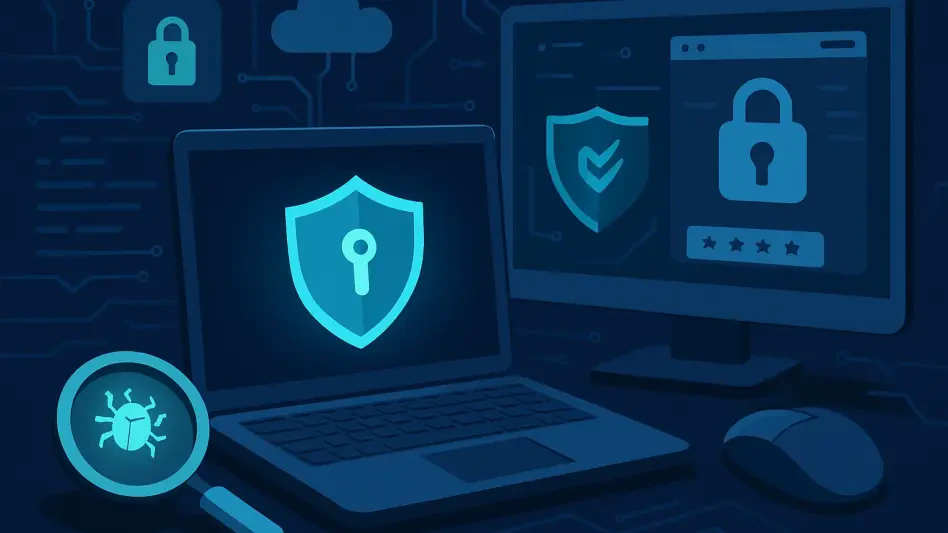In today’s digital age, cybersecurity incident response (IR) has become a critical aspect of protecting organizational assets. The shift from reactive to proactive strategies, the integration of advanced technologies like AI and machine learning, and the emergence of sophisticated cyber threats have all contributed to the evolution of IR practices. This article delves into the top nine tools that can significantly enhance your cybersecurity incident response capabilities.
The Evolution of Cybersecurity Incident Response
From Reactive to Proactive Strategies
Modern IR teams are no longer just reactive; they operate much like emergency responders, preparing in advance through constant training and adaptation. The goal is not only to respond to incidents but to prevent them by anticipating potential threats. This proactive approach involves regular drills, simulations, and the development of comprehensive incident response plans.
The shift towards proactive strategies is driven by the need to minimize the impact of cyber incidents. By identifying vulnerabilities and potential attack vectors before they can be exploited, organizations can significantly reduce their risk exposure. This approach also involves continuous monitoring and real-time threat intelligence to stay ahead of emerging threats. It’s about staying one step ahead of cybercriminals and ensuring that any potential threat is neutralized before it can cause harm.
Leveraging Big Data and AI
The enormous amount of data generated by devices, applications, and systems has made threat detection more efficient. Machine learning and AI help security teams by filtering through vast amounts of data to quickly spot and react to threats. These technologies can identify patterns and anomalies that may indicate a security breach, enabling faster and more accurate incident response.
AI and machine learning also play a crucial role in automating repetitive tasks, freeing up human analysts to focus on more complex issues. By continuously learning from new data, these systems can adapt to evolving threats and improve their detection capabilities over time. This integration of advanced technologies is essential for managing the increasingly sophisticated nature of cyber threats. The ability to predict and respond to these threats in real-time can make a significant difference in the overall security posture of an organization.
Top Cybersecurity Incident Response Tools
Splunk Phantom
Splunk Phantom is a powerful tool that automates repetitive tasks, centralizes alerts, and provides data visualization. It enables security teams to respond to incidents more efficiently by orchestrating workflows and integrating with other security tools. This automation reduces the time and effort required to manage incidents, allowing teams to focus on more strategic activities.
User feedback highlights the tool’s high level of customization, which allows organizations to tailor it to their specific needs. However, setting up and configuring Splunk Phantom can be complex and may require skilled personnel. Despite this, its ability to streamline incident response processes makes it a valuable asset for any security team. The tool’s robust capabilities and flexibility offer significant advantages to organizations looking to enhance their incident response operations.
KnowBe4
KnowBe4 focuses on the human element of cybersecurity by providing phishing simulations, interactive training, and detailed reporting on user behavior. This tool helps organizations educate their employees about the risks of phishing attacks and other social engineering tactics. By improving user awareness, KnowBe4 reduces the likelihood of successful attacks.
Users find the training modules engaging and effective, making it easier to maintain a security-conscious culture within the organization. While KnowBe4 is not a technical IR tool, its emphasis on user education complements other security measures and enhances overall incident response capabilities. By ensuring that employees are aware of and can recognize potential threats, organizations can create a stronger first line of defense against cyber attacks.
Palo Alto Networks Cortex XDR
Palo Alto Networks Cortex XDR is an AI-driven tool that offers threat detection, root-cause analysis, and seamless integration with other solutions. It provides comprehensive visibility into network and endpoint activities, enabling security teams to detect and respond to threats more effectively. The tool’s advanced analytics capabilities help identify the root cause of incidents, facilitating faster remediation.
Despite its powerful features, users note that Cortex XDR has a high learning curve and comes with a premium price tag. Organizations must weigh these factors against the benefits of enhanced threat detection and response capabilities. For those willing to invest in the tool, Cortex XDR can significantly improve their incident response processes. The advanced features that this tool offers can make a substantial difference in addressing and mitigating cyber threats.
Darktrace
Darktrace uses AI-based anomaly detection to identify and respond to threats in real-time. Its autonomous response capabilities allow it to contain threats quickly, minimizing potential damage. The tool’s intuitive dashboards provide clear visibility into network activities, making it easier for security teams to monitor and manage incidents.
While Darktrace is praised for its real-time threat containment, users have reported occasional false positives. This can lead to unnecessary alerts and potential disruptions. However, the tool’s ability to detect and respond to threats autonomously makes it a valuable addition to any security arsenal. Its real-time response and high detection accuracy make it an effective tool for modern incident response.
CrowdStrike Falcon
CrowdStrike Falcon is a cloud-native tool that offers real-time endpoint monitoring and comprehensive analytics. Its lightweight agent provides visibility into endpoint activities without impacting performance. The tool’s cloud-based architecture allows for easy deployment and scalability, making it suitable for organizations of all sizes.
Users appreciate Falcon’s ease of use and powerful analytics capabilities. However, the tool can be expensive for small to medium businesses (SMBs) and may lack some integrations. Despite these limitations, CrowdStrike Falcon remains a popular choice for organizations seeking robust endpoint protection and incident response capabilities. Its strong analytics and comprehensive protection features provide significant advantages for securing endpoint devices.
Cisco SecureX
Cisco SecureX centralizes incident management, automates playbooks, and offers customizable dashboards. It integrates with other Cisco security products, providing a unified platform for managing security incidents. This centralization simplifies incident response processes and improves overall efficiency.
However, users find that Cisco SecureX is best within Cisco environments and may be limited for non-Cisco systems. It also requires advanced skills to maximize its capabilities. Despite these challenges, its ability to streamline incident response in a unified environment can greatly benefit organizations that rely on Cisco products. The customizable dashboards and automated playbooks offer flexibility and efficiency in handling security incidents.
Conclusion
In today’s digital landscape, cybersecurity incident response (IR) has become an essential part of safeguarding an organization’s assets. Traditionally, businesses relied on reactive measures, addressing cybersecurity incidents only after they occurred. However, the current trend is to adopt proactive strategies, aiming to prevent cyber threats before they can cause damage. The introduction of advanced technologies, such as artificial intelligence (AI) and machine learning, has transformed IR practices, making them more efficient and effective. Additionally, the complexity and sophistication of modern cyber threats demand more robust and comprehensive response mechanisms.
This article highlights the top nine tools that can significantly improve your organization’s cybersecurity incident response capabilities. These tools are designed to help you detect, analyze, and respond to potential threats swiftly and effectively. With the integration of AI and machine learning, these tools can predict potential incidents and automate responses to enhance overall security. By leveraging these advanced technologies and adopting a proactive approach, organizations can better protect their digital assets from ever-evolving cyber threats.







